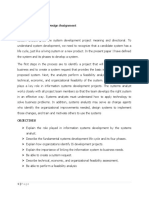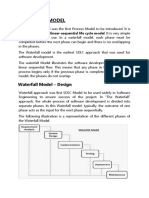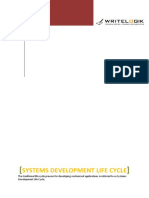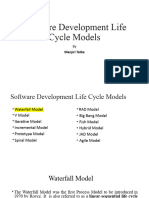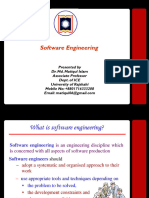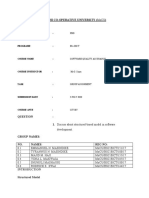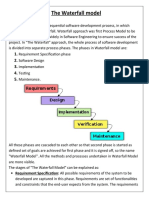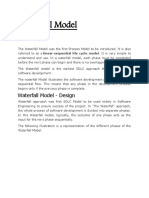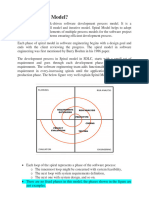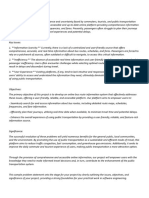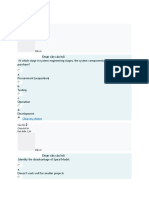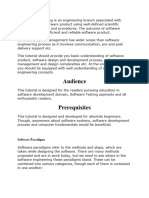0% found this document useful (0 votes)
102 views8 pagesSystem Development Life Cycle
The document describes the six main phases of the system development life cycle: 1) system planning, 2) system analysis, 3) system design, 4) implementation and deployment, 5) system testing and integration, and 6) system maintenance. It then provides details about the waterfall model, which was the first process model introduced and involves completing each sequential phase before moving to the next. The waterfall model is described as having clear phases and milestones but also being inflexible to changes.
Uploaded by
Ayan MandalCopyright
© © All Rights Reserved
We take content rights seriously. If you suspect this is your content, claim it here.
Available Formats
Download as DOCX, PDF, TXT or read online on Scribd
0% found this document useful (0 votes)
102 views8 pagesSystem Development Life Cycle
The document describes the six main phases of the system development life cycle: 1) system planning, 2) system analysis, 3) system design, 4) implementation and deployment, 5) system testing and integration, and 6) system maintenance. It then provides details about the waterfall model, which was the first process model introduced and involves completing each sequential phase before moving to the next. The waterfall model is described as having clear phases and milestones but also being inflexible to changes.
Uploaded by
Ayan MandalCopyright
© © All Rights Reserved
We take content rights seriously. If you suspect this is your content, claim it here.
Available Formats
Download as DOCX, PDF, TXT or read online on Scribd
/ 8



